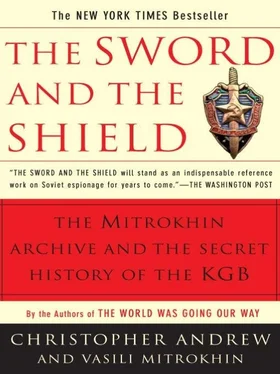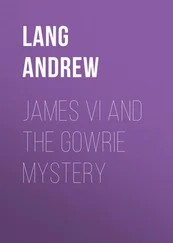NINETEEN
IDEOLOGICAL SUBVERSION
Part 1: The War Against the Dissidents
Soviet “dissidents” made their first public appearance on Constitution Day (December 5) 1965, when a group of about two hundred organized a demonstration in Pushkin Square, Moscow, in support of the authors Andrei Sinyavsky and Yuli Daniel, who were shortly to go on trial accused of attempting to subvert the Soviet system through their writings. Some of the demonstrators briefly succeeded in unfurling banners reading “Respect the Constitution!” and “We Demand an Open Trial for Sinyavsky and Daniel!”, before being frogmarched to the police station by plain clothes members of the KGB. Henceforth the term used to describe democratic and human rights activists in the Soviet Union was the English word “dissidents” rather than its Russian equivalent inakomysliashchii— probably as part of an official attempt to portray such people as stooges of the West rather than as the authentic voice of Russian protest. 1
The KGB had been unusually slow to track the two writers down. Sinyavsky, using the pseudonym “Abram Tertz,” had begun publishing his work in the West, initially in Paris, in 1959. His friend Daniel, employing the alias “Nikolai Arzhak,” had followed suit in 1961. After extensive analysis of the publications of “Tertz” and “Arzhak” by Soviet writers and literary critics who were KGB agents and co-optees, opinion in the Centre was divided on their real identity. One school of thought claimed that the intimate knowledge of Moscow life displayed by both authors showed that they were living in the Soviet Union and had smuggled their work abroad for publication. This view was supported by the Paris residency, which forwarded a report that the manuscript for “Tertz’s” book, The Trial Begins ( Sud Idyot ), had reached France from Moscow. Others within the Centre sided with literary analysts who argued that “inaccuracies” in the authors’ depiction of Moscow life showed that they were living in the West, and cited other (mistaken) KGB reports that both “Tertz” and “Arzhak” were living in western Europe. 2The KGB was further confused by the fact that Sinyavsky used a Jewish pseudonym, thus giving rise to the mistaken belief that he was Jewish himself. The official Soviet press later denounced the choice of pseudonym as “a squalid provocation.” According to a writer in Izvestia:
By publishing anti-Soviet tales under the name of Abram Tertz in foreign publications, Sinyavsky was attempting to create the impression that anti-Semitism exists in our country and that a writer with a name such as Abram Tertz has to seek publishers in the West if he wants to write “frankly” about Soviet life. 3
After several years’ fruitless surveillance of the wrong writers, a KGB agent in the Moscow literary world, codenamed YEFIMOV, reported early in 1964 that an author named Yuli Daniel was in possession of “anti-Soviet material.” Simultaneously the KGB in Yalta sent a report from another agent who claimed that Daniel had the manuscript of “a story for which he could be given fifteen years’ imprisonment.” The surveillance of Daniel quickly led the KGB to Sinyavsky. In May 1964 the Centre began operation EPIGONI to obtain proof that Sinyavsky and Daniel were the authors of the “anti-Soviet” volumes published in the West, to discover where they kept their manuscripts and find out how they smuggled them out of the Soviet Union. The KGB arranged for Sinyavsky’s employer, the Gorky Institute of World Literature, to send him on a business trip away from Moscow. During his absence it conducted a detailed search of his flat and installed bugging devices. Searching and bugging Daniel’s apartment proved to be more difficult. His tworoom flat with shared kitchen at 85 Leninsky Prospekt was reported to be “constantly occupied by his family, a friend and a dog.” Eventually, a KGB officer, posing as the relative of a neighbor, succeeded in staying in the flat, taking wax impressions of the keys and creating an opportunity for a detailed search. 4
It took over a year for operation EPIGONI to achieve significant results. Though the KGB lacked proof, it correctly concluded that Sinyavsky’s first attempts to smuggle his work to the West had been assisted by Héläne Zamoyska, the daughter of a former French naval attaché, whom he had met while she was studying at Moscow University. 5In the summer of 1965 the KGB intercepted a letter to Sinyavsky, signed “Alfreda” but giving no return address, inviting him to meet her at the Hotel Bucharest in Moscow. Having discovered that “Alfreda” was Alfreda Aucouturier, a friend of Hécläne Zamoyska, the KGB hoped to catch Sinyavsky in the act of handing over a manuscript to her. Sinyavsky and Daniel were both placed under 24-hour surveillance and a “special operational group” was formed to catch Madame Aucouturier redhanded. Despite bugging a visit made by Madame Aucouturier to Sinyavsky’s flat and filming a later meeting between them near the Rechnoy Vokzal metro station, the group failed to detect any manuscript being handed over. It was disappointed again when it searched Madame Aucouturier’s luggage at the Russo-Polish frontier on September 8. 6A long interrogation also failed to produce results. The KGB’s unsuccessful attempts to persuade Aucouturier to admit that “Tertz’s” real name was Sinyavsky merely made her realize how thin their evidence was against him. 7
Shortly after Madame Aucouturier was allowed to leave Russia, Sinyavsky and Daniel were arrested and taken to Lefortovo prison in Moscow. Under interrogation both confessed that they had published works under pseudonyms in the West, but denied that they were anti-Soviet. They also refused to admit that Madame Zamoyska had smuggled their manuscripts out of Russia. According to surveillance reports before their arrest, Sinyavsky and Daniel had been suspicious of all new acquaintances, sensibly fearing that they might be KGB agents. In Lefortovo prison, however, Sinyavsky fell for one of the oldest deceptions in the KGB’s repertoire. A stoolpigeon codenamed MIKHAILOV (probably the illegal Geli Fyodorovich Vasilyev) 8was introduced into his cell and succeeded in gaining his confidence. Before MIKHAILOV’s “release” in November, Sinyavsky asked him to pass on a series of signs and passwords to his wife to enable her to communicate secretly with him during prison visits. MIKHAILOV’s information and surveillance of Sinyavskaya’s meetings with her husband provided what the EPIGONI file describes as “invaluable material relating to Sinyavsky’s contacts.” The most important of these contacts was Andrei Remizov, head librarian at the Moscow Library of Foreign Literature. 9
Remizov confessed during interrogation that, under the pseudonym “Ivanov,” he had published in the West the play Is There life on Mars? and the essay “American Pangs of the Russian Conscience,” which had appeared in Encounter magazine in 1964. 10He also admitted that, during a visit to France, he had delivered one of Sinyavsky’s manuscripts to Hélène Zamoyska. 11The KGB seems to have planned originally to put Remizov on trial with Sinyavsky and Daniel. When Remizov became suicidal, however, the plan changed. It was decided instead to use Remizov primarily as a prosecution witness against Sinyavsky and Daniel. His own case was treated separately and he was placed under 24-hour suicide watch. To prevent further contact with the wives of Sinyavsky and Daniel, who were trying to persuade him not to give evidence, Remizov was sent on official business by the Ministry of Culture to Kursk and Tula, where he remained on suicide watch until the trial. Surveillance of Daniel’s wife showed that she was collecting a dossier of material for publication in the West before the trial. The KGB successfully planted on her an illegal posing as a sympathetic Western businessman who delivered the dossier not to the West but to the KGB. 12
Читать дальше











